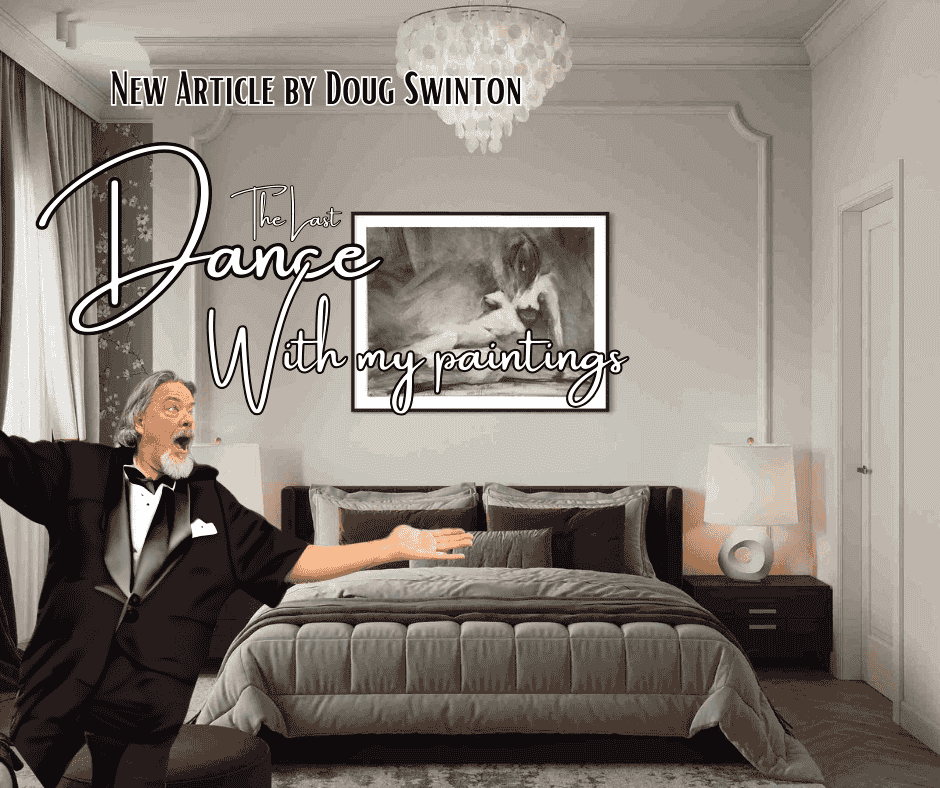4 Things To Get Right Before Painting
- Doug Swinton

- Jul 9, 2017
- 3 min read
Updated: Nov 18, 2020

Don't reach for that brush until you have the essentials covered.
Many students think that leaning to paint means mixing up paint and brushing it on in an interesting fashion. There is so much more to learn in order to create an interesting painting. I agree that pushing paint around is the fun part, but it's even more rewarding when you get the following aspects of the painting process done correctly.
1. Reference
Obviously, the first thing you need is a subject. Whether you paint from life or a photo you need to choose your reference carefully.

When painting from life, such as a still life or a portrait, you will need a good light source. The quality of your painting will reflect the quality of the lighting setup. Lighting in a painting area is crucial to experience true colours in natural daylight. Create a well-lit painting area with tips from an artist in this free art video.
If you are painting outside, do so during the Golden Hour (sometimes called the "magic hour”), which is roughly the first hour of light after sunrise, and the last hour of light before sunset. During these times the sun is low in the sky, producing a soft, diffused light which is much more flattering than the harsh midday sun. Afternoons are for siestas.
If you're using a photo reference, use photos that are well composed, have a correct white balance (no colour casts) and contain lots of shadows. It definitely helps if you know how to adjust your reference photos in something like Photoshop or Lightroom (watch for an upcoming workshop). Here is a VIDEO on how to correct artist reference photos.

2. Drawing
You need to draw in order to paint. By “draw” I don’t mean use a pencil. I’m talking about designing a composition. In order to engage the viewer, create interest and focus, you need the ability to sketch out your idea in an interesting way. This is a left-brained process involving thinking, planning, analyzing, comparing, measuring, etc. It’s a skill you have to practice but once you get used to creating better compositions, your paintings will flow much more readily.

3. Materials
Good materials make great paintings and using the correct tool for the job is paramount. All too often artists choose art supplies with complete disregard for what the materials can and cannot achieve.
Learn what brushes are made for which techniques. Learn about the working properties of different colours. Learn what surface works best for which style or effect. For hundreds of years artists have attempted to master their techniques and all this information is readily available to us. Research. There is no need to reinvent the wheel.

4. Colour
It is possible to make a painting without colour, or monochromatic, but in most cases you will want to apply colour to capture your subject or express an emotion. Colour is powerful and one can spend a lifetime studying its endless nuances and magical qualities. To begin with, familiarize yourself with basic colour theory and keep your palette very simple. Learn to control the hue, intensity and temperature. Read my article on 7 Benefits of Painting with a Limited Palette and you will achieve a grater balance in your painting.
Note: Colour is a complicated subject. If you are struggling I suggest taking this two-day workshop: Mixing the Right Colour.
Now put it all together and paint! If you took care with your reference, drawing, materials and colour, your painting process turns from work into play.
The fun part now is creating and experimenting with all your new skills.
Happy pre-painting.
Your friend in art, Doug.








La Beca Rita Cetina busca reducir la deserción escolar apoyando a jóvenes comprometidos con sus estudios y con grandes aspiraciones profesionales.
This tool has made my work much easier. No more manual math or guesswork—the weighted grade calculator provides accurate results right away. A great addition to my productivity tools.
Castle APK challenges you to lead a kingdom to glory. Strengthen your army, expand territory, and conquer rival empires through skill, strategy, and determination.
For companies serious about automation, pdcelectric is a trusted partner that delivers tangible value. https://pdcelectric.com/ systems are purpose-built for efficiency, offering clean integrations and robust designs that improve uptime and performance. With decades of combined experience, pdcelectric sets the standard for quality and dependability.
where the best winning rates, cutting-edge technology, and entertainment all come together. To begin studying the games and uncovering a number of effective methods, go to Drift Boss right now.